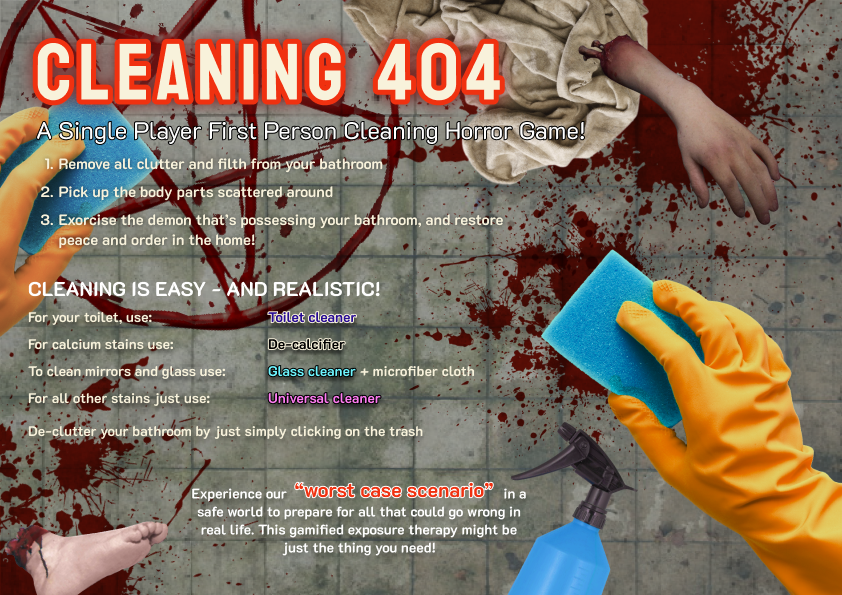Cleaning 404

Problem Statement
The main objective of our game is to create an entertaining, motivating, and immersive experience, in which people clean a bathroom with different tools and soap, all while showing the player a worst-case-scenario to make their own unclean living space feel like a less daunting task - and learn a bit about different surfaces and cleaners while they’re at it.
Description
Technologies used: Unity, C#, Blender, Oculus Quest 2, GitHub, Figma,
Google Docs & Forms.
I worked with a team with two web developers. Our project combined desk research, surveys, usability
testing, and iterative design to refine our concept. We began
with research on common fears related to cleaning and explored how exposure therapy and horror elements
could make the
experience both engaging and educational. A survey helped us identify user behaviors and motivators, shaping
key game
mechanics. Throughout development, we conducted usability tests to fine-tune interactions, ensuring clear
instructions
and effective feedback. Using GitHub Projects for task management, we maintained an agile workflow, making
iterative
improvements based on user feedback.
Results
The final product is a horror-inspired cleaning simulation set in a dimly lit bathroom, designed to evoke discomfort and motivation through fear-based challenges. Players must clean dirty surfaces, remove unsettling obstacles like bugs and grime, and fend off a giant spider that symbolizes their fears. Mechanics include progressive difficulty, dynamic UI, and interactive horror elements that keep players engaged. The game’s eerie atmosphere, sound design, and lighting shifts heighten tension, while satisfying cleaning mechanics provide a rewarding contrast. Although originally intended for VR, the game was adapted for PC, maintaining its immersive and thought-provoking experience.